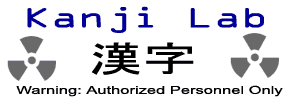
Departments

EVERY OCEAN HAS WATER
毎・海
Except for one element, these two kanji look virtually the same. In this section, we will examine the differences between 毎 and 海, and create a sentence which will help you to remember them both.
The first character, 毎, is a highly useful grammatical element that means “-every.” The examples below all use the on reading of the character, MAI:
毎日(まいにち) everyday
毎月(まいつき) every month
- 毎週(まいしゅう) every week
毎回(まいかい) every time
毎度(まいど) every time
- 毎年(まいねん) every year
海 carries the meaning of “ocean.” It can be read two ways: KAI (on) and umi (kun):
海上(かいじょう)[on] the sea
海里(かいり) nautical mile
- 海戦(かいせん) naval battle
海辺(うみべ)seashore
The only visual difference between 毎 and 海 is the “water radical” at the far left of the latter. Here is a sentence which we can use to remember this distinction:
Every 毎 ocean 海 has water.